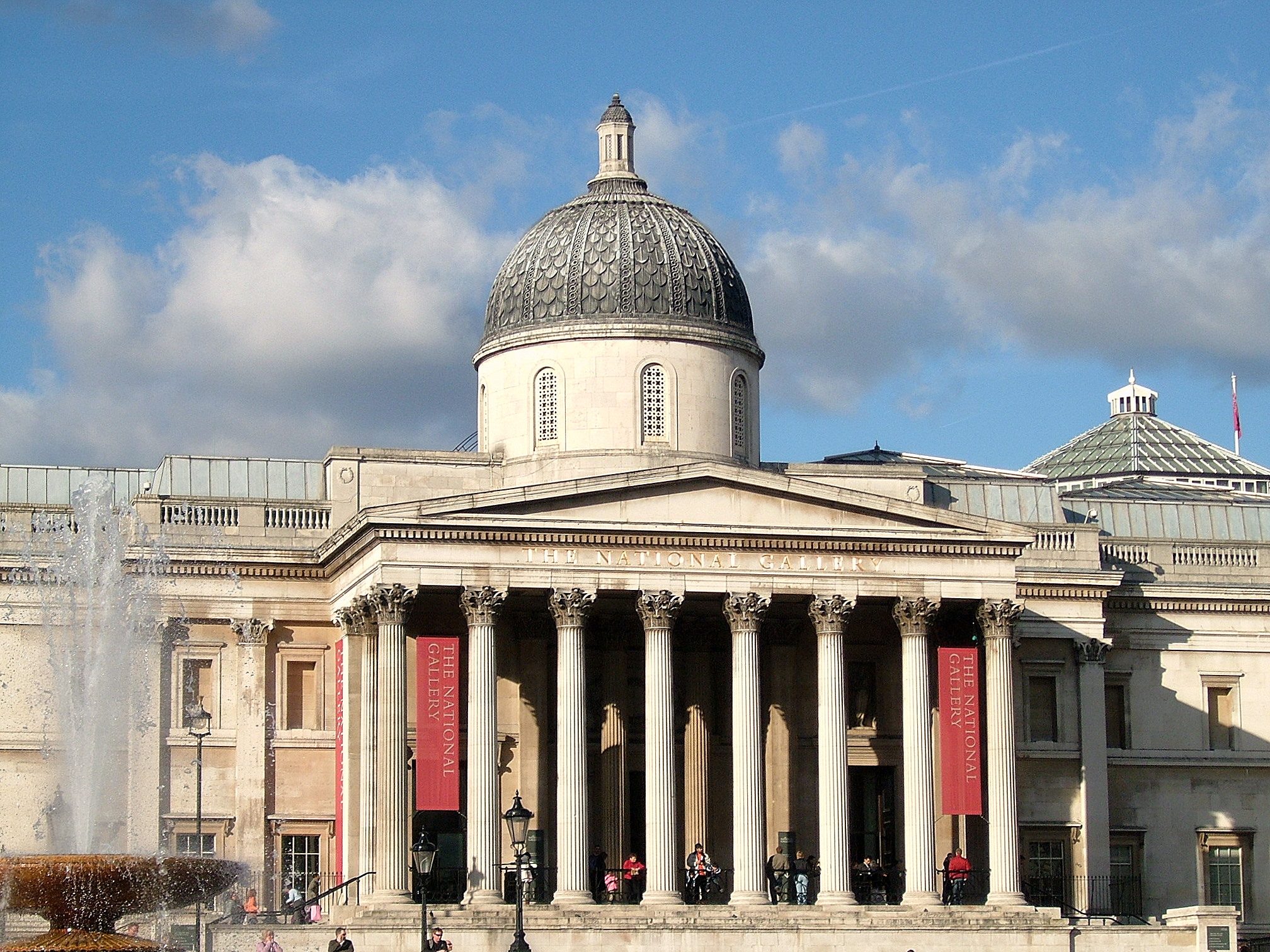The National Gallery – London
Unlike other major European national collections such as the Musée du Louvre, the National Gallery in London was not created as a result of the nationalization of the great royal collections: it was indeed founded in 1824 with the purchase by the British government of 38 paintings belonging to the banker John Julius Angerstein.
The works were initially exhibited at the Angerstein House in Pall Mall, but due to the significant increase of the collection over the years, it became necessary to build a suitable space to store it.
In 1838, the current site in Trafalgar Square was inaugurated: designed by architect William Wilkins, a neoclassical form was chosen on the model of the Greek Templar architecture, since the museum should be “Temple of the Arts, which can feed contemporary art through the models of history”. The structure today slightly differs from the original one, due to the various enlargement works carried out over the years, necessary to contain the growing collections.
Over time, in fact, the collection of the National Gallery has became one of the largest art collections in Europe: counting more than two thousand works on display, it preserves at least one work by any great European master (in addition to “minor” artists and local schools), covering a period ranging from the Middle Ages to post-impressionism and offering a complete overview of the Italian, Flemish, Dutch, Spanish, French and, of course, English schools.











